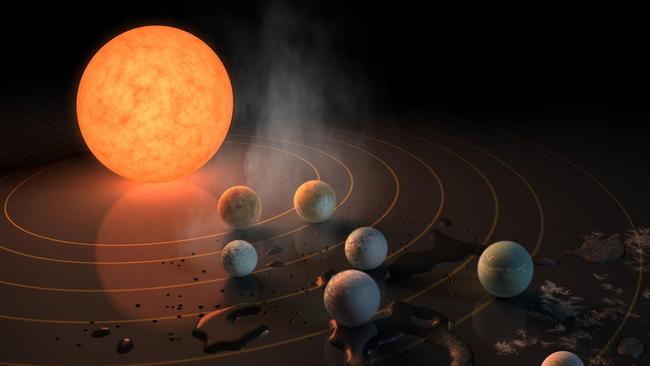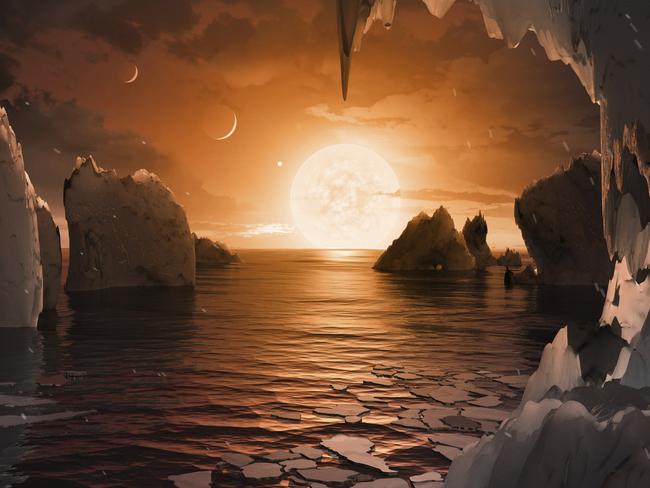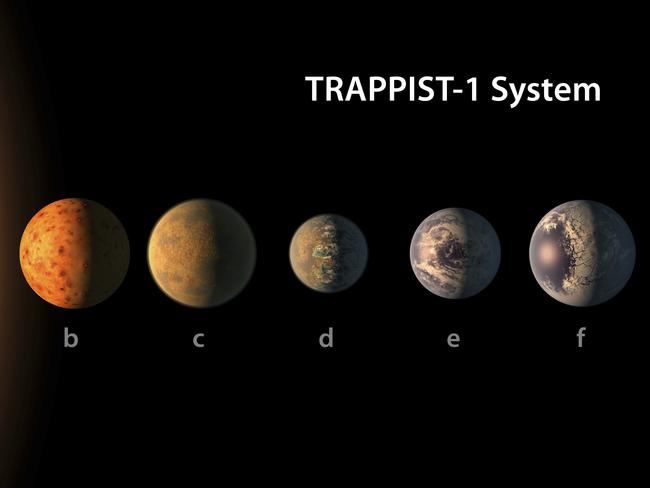Have all the other alien races destroyed themselves?
NASA’s latest breakthrough discovery boosts the theory that alien life is out there somewhere. This is why we still haven’t found it.

ONE afternoon in the summer of 1950 the great physicist Enrico Fermi went to lunch with three of his colleagues at the mess hall of the Los Alamos National Laboratory.
During the walk over they had been joking about flying saucers but as they sat down to lunch the conversation had moved on to more Earthly matters. Indeed, it was so mundane that years later no one present could even remember what they were talking about
Then, apropos of nothing, Fermi interrupted with a single simple question: “Where is everybody?”
Suddenly everyone at the table laughed because they all instantly knew what he meant. Enrico Fermi had just asked the most important question in the universe.
Fermi’s question was based on what every scientist at the table understood. That based on the sheer numbers alone there was an extremely high probability of life existing on other planets. And yet there was no credible evidence of such aliens existing.
Before the conspiracy theorists start spluttering, it is worth noting that Fermi worked on the United States’ top secret Manhattan Project during World War II and is known as “the architect of the atomic bomb”.
In other words, this was a guy with pretty good security clearance. If there were aliens hanging out in the pool room at Area 51 he would have known about it.

But here they were at the centre of scientific knowledge in the most powerful country on Earth and the closest proof was a New Yorker cartoon about little green men stealing trash cans.
It wasn’t that Fermi didn’t believe in aliens — on the contrary, he knew that statistically speaking they had to exist. He just wanted to know why nobody had found one.
Years later that question has become known as “the Fermi paradox”, and it just got a whole lot harder to answer this week after NASA revealed it had discovered seven Earth-sized planets in a single solar system. Three of these are in the famous “Goldilocks zone”, meaning they are not too hot and not too cold to sustain life.
And they are not alone. According to an analysis of data from the Kepler space mission in 2013, there could be as many as 40 billion habitable planets in our galaxy alone. In 2015, a NASA scientist estimated there were a billion just like Earth.
So, as Fermi asked, where is everybody?
It may be that none of them has produced life, but this is almost statistically impossible. Or it may be that none of them has produced intelligent life.
Are we to think that out of a possible 40 billion worlds in the course of 13 billion years since the Milky Way was formed, ours is the only planet upon which species have evolved? Or that we are the most advanced?

Again, this is statistically improbable. The most likely explanation for why we haven’t encountered any aliens is that the distances are simply too vast and, as far as we are currently aware, physically impossible for a carbon-based life form to travel.
For example, to reach our new Earthly neighbours orbiting TRAPPIST 1, we would have to travel at the speed of light for 39 years. And we are a civilisation that cannot even manage to fix the M5.
But there is also a far darker matter at the heart of the extraterrestrial debate.
First, let us remember that Earth is about 4.54 billion years old, humans are only 200,000 years old and our first orbital flight was in 1961. In other words, it took us 4,539,800,000 years to exist and another 199,944 years to get to space.
And so if we are to make contact with any other civilisation even remotely like ours, not only do we have to travel inconceivably vast distances but the timing has to be pretty spot on.
But it is not waiting for other civilisations to evolve that is the real problem. Oh no, that is the good part.
The real problem is that any civilisation capable of space travel is almost certainly also capable of wiping itself out.
Consider this: Just a year after the Soviets put a man into space the world was brought to the brink of nuclear holocaust by the Cuban missile crisis.
Around a nearby, cold, small star we found 7 rocky Earth-size planets, all of which could have liquid water - key to life as we know it. pic.twitter.com/C2JWjDfBdK
— NASA (@NASA) February 22, 2017
As the legendary astronomer Carl Sagan observed:
“Why are they not here? The temptation is to deduce that there are at most only a few advanced extraterrestrial civilisations - either because we are one of the first technical civilisations to have emerged, or because it is the fate of all such civilisations to destroy themselves before they are much further along.”
In other words it is highly likely there are other alien civilisations out there but it’s just as likely they have killed themselves.
Indeed, in the case of Earth we developed the capacity to destroy ourselves even before we managed space travel.
And if Germany had had atomic weapons at the same time as the Americans — as was suspected at the time — humans may never have achieved space travel at all. Civilisation could have been wiped out in 1945.
Yes, a quarter of a century before man landed on the moon, humankind had already invented the means of its own annihilation: a man-made nuclear chain reaction.
And as for Enrico Fermi, the man who first asked the question: “Where is everybody?”
He was the guy who invented it.




